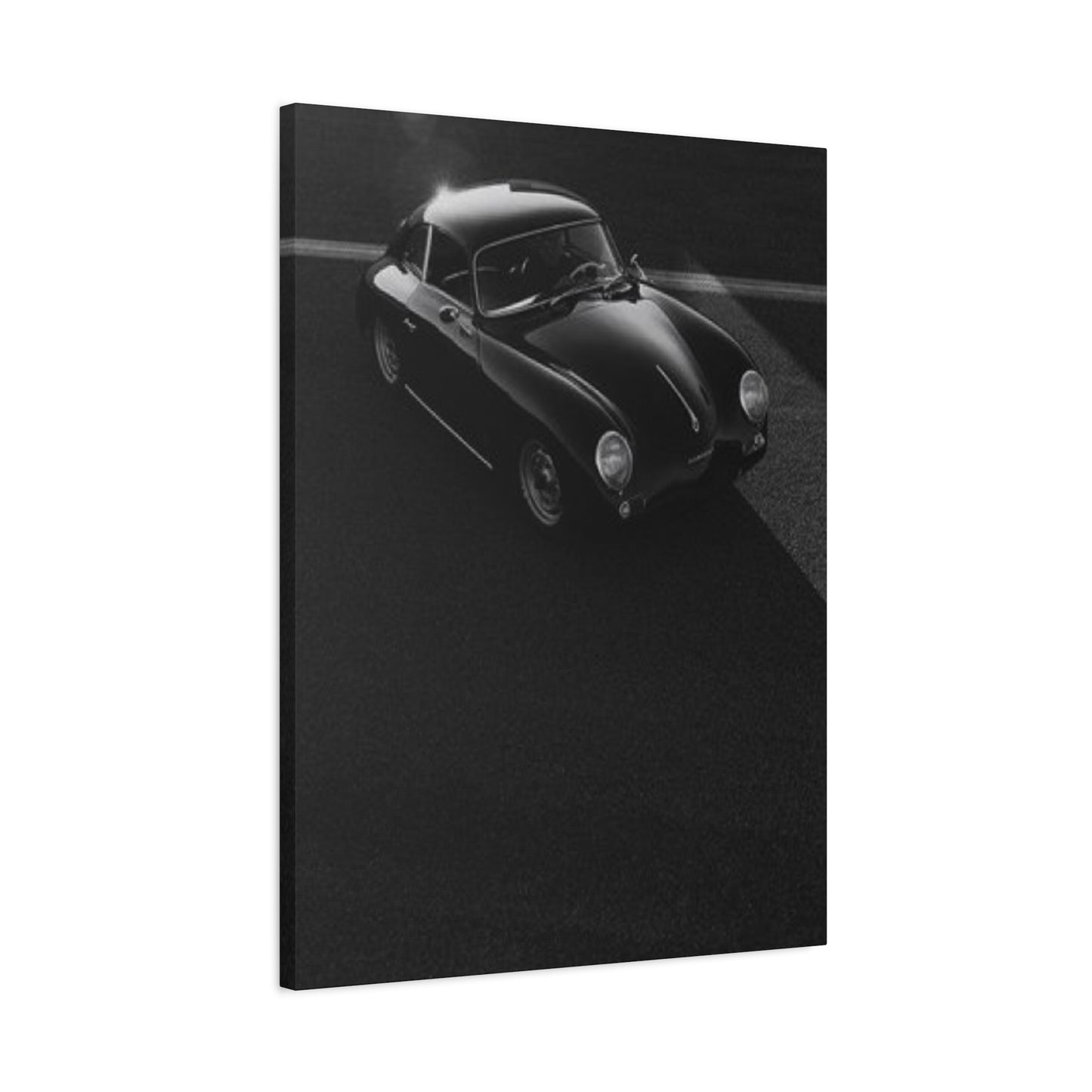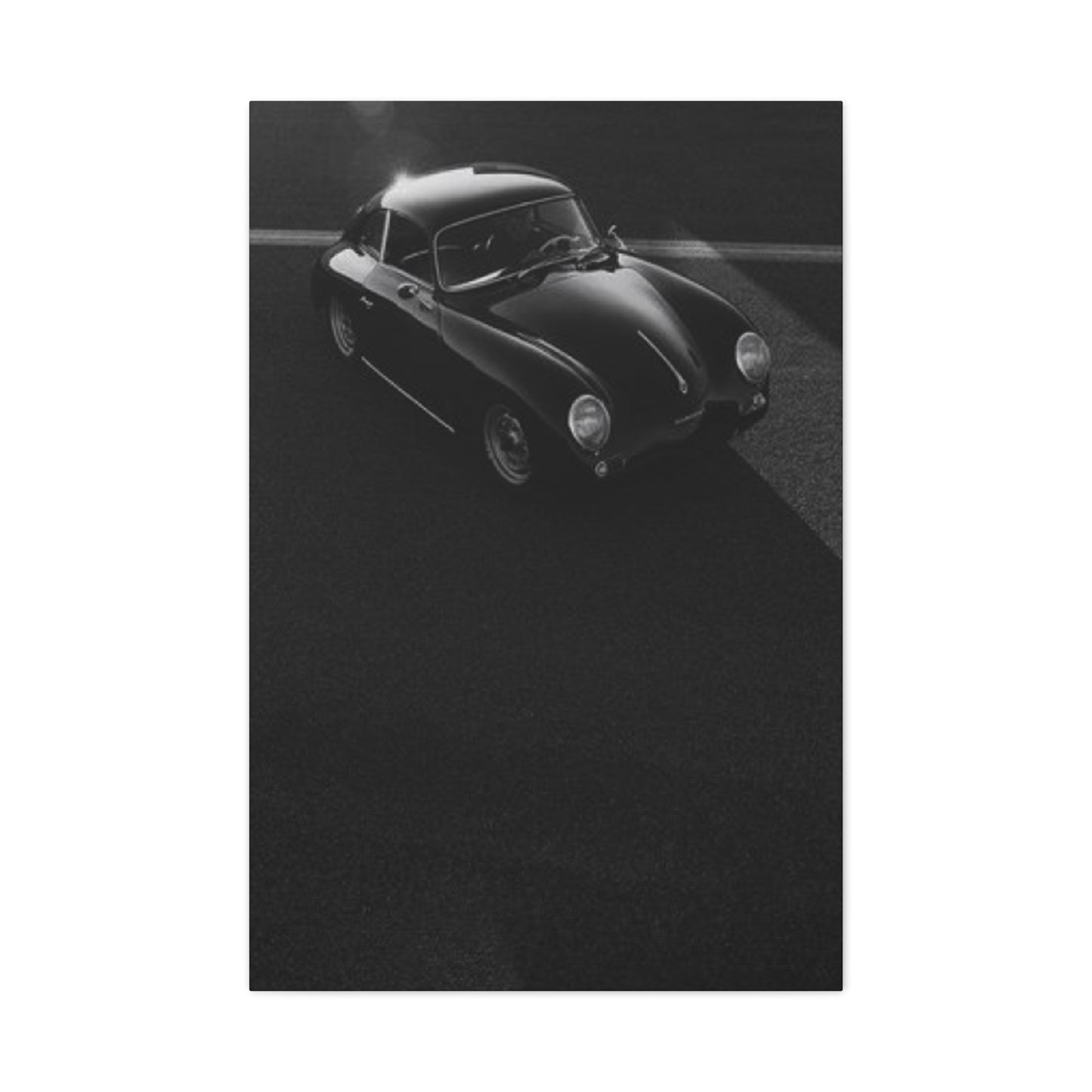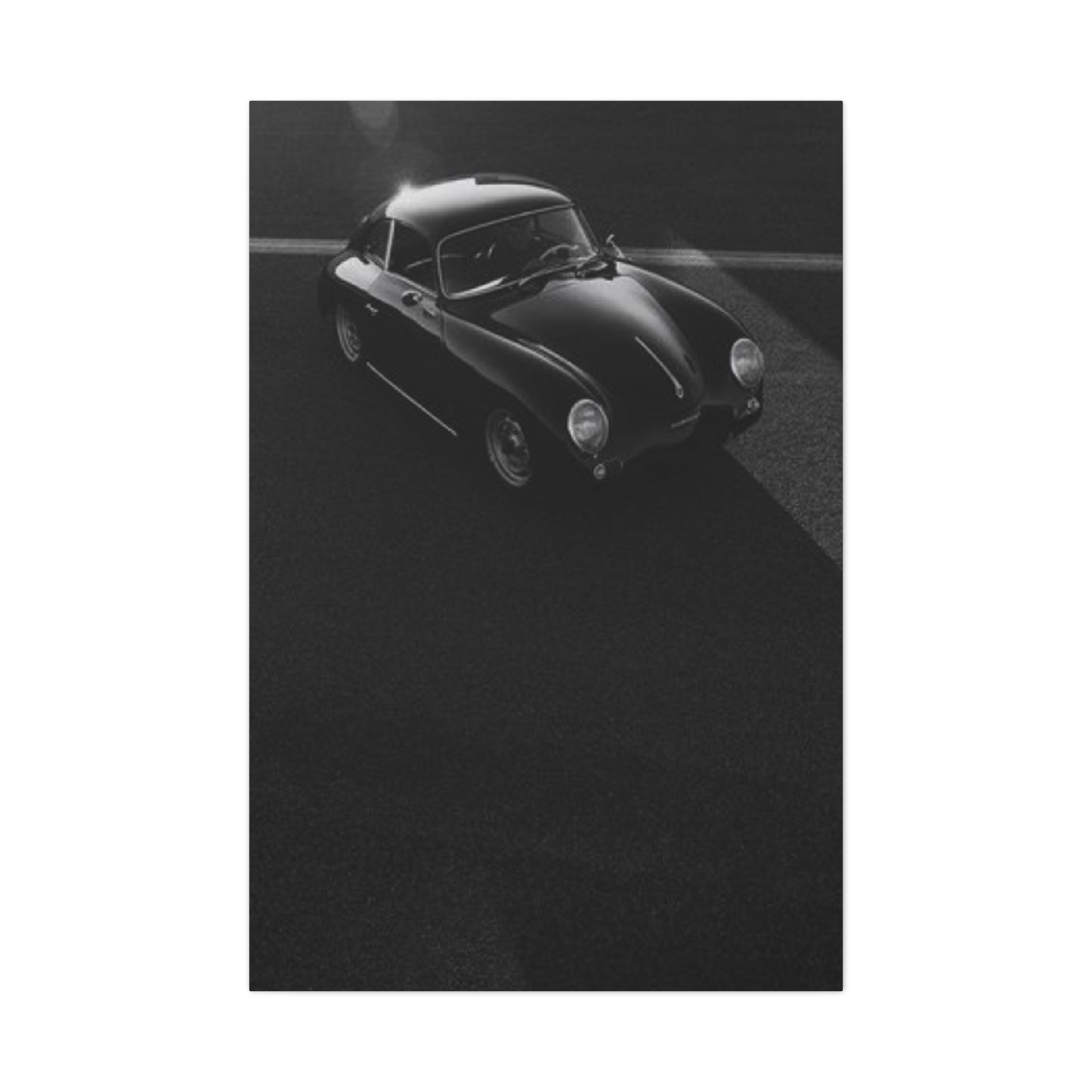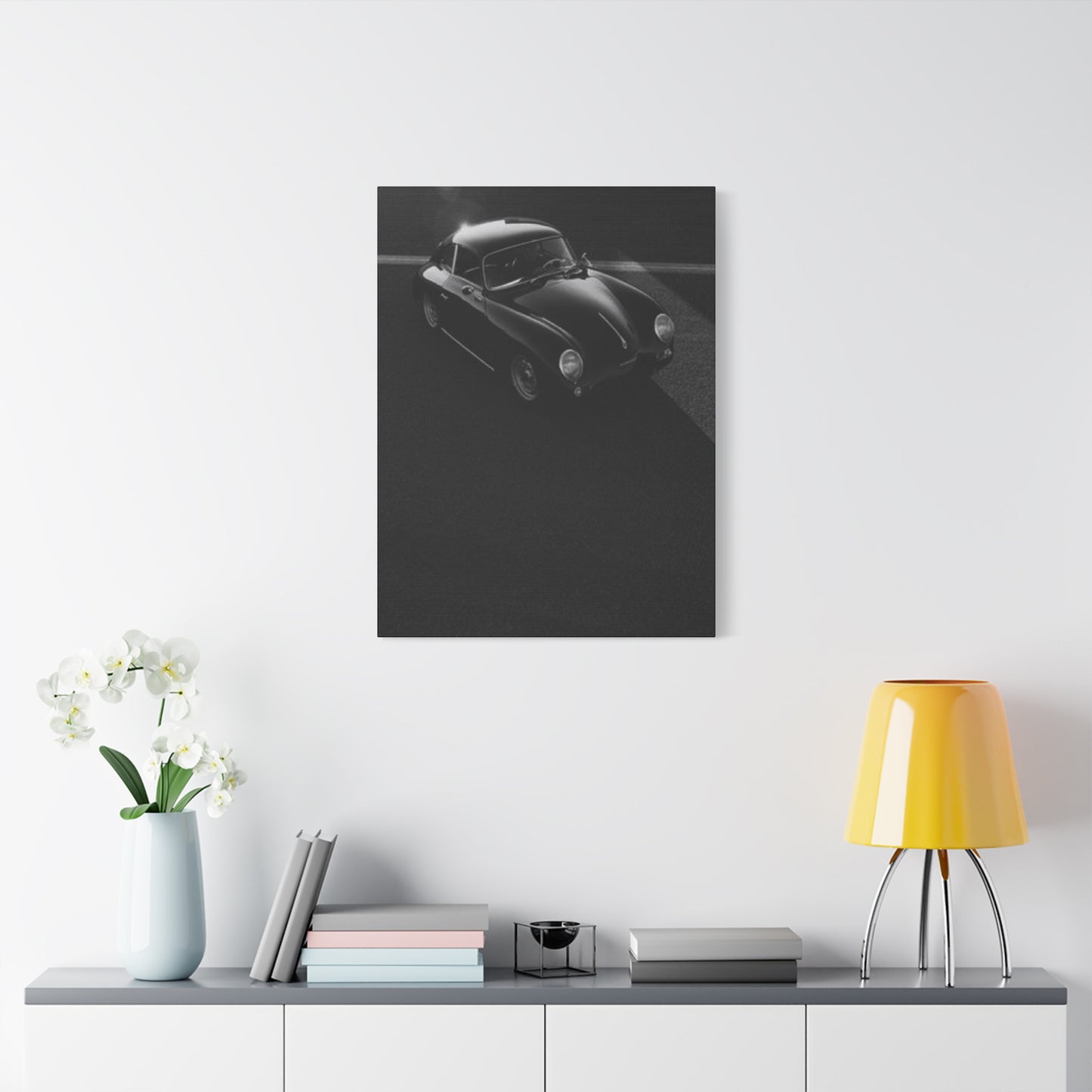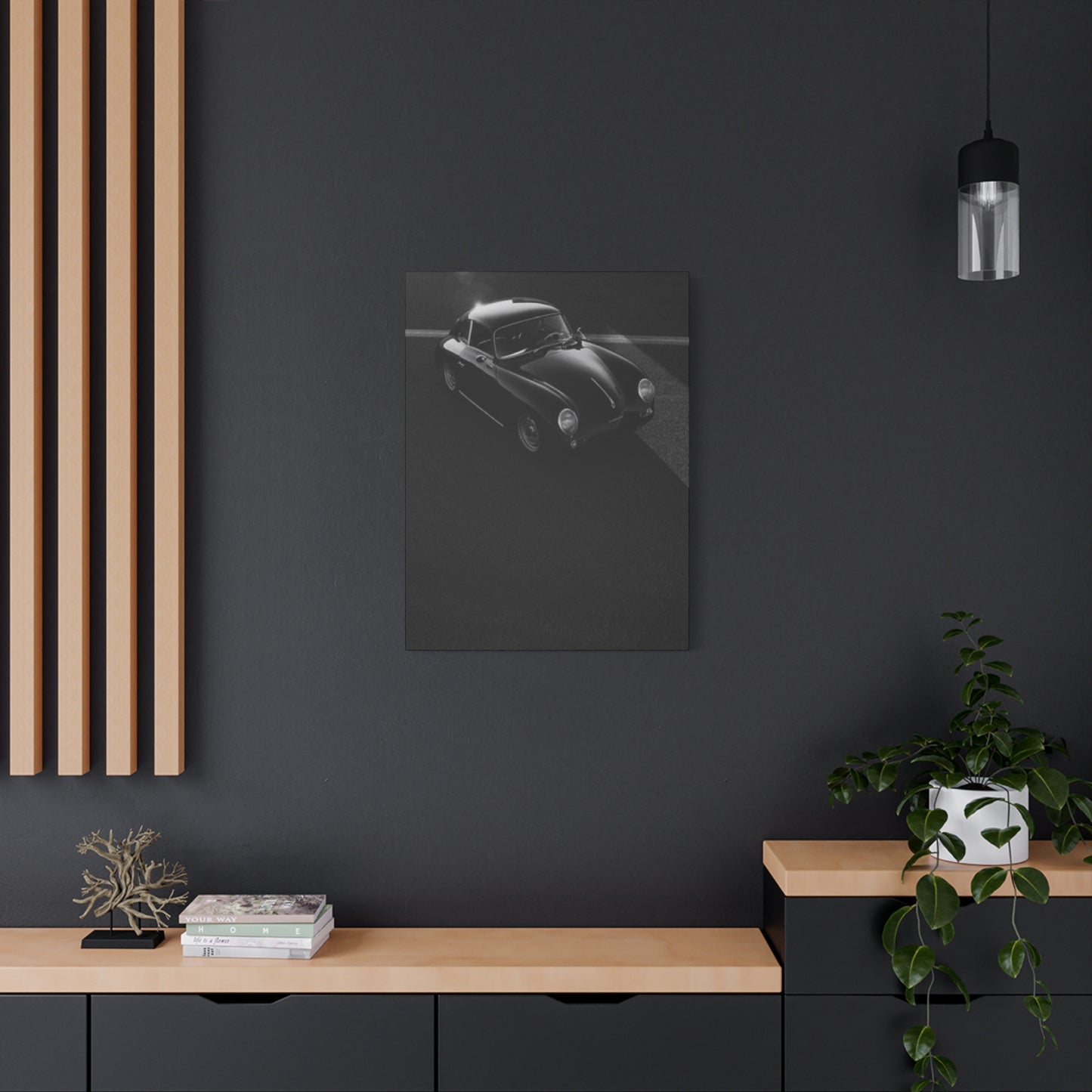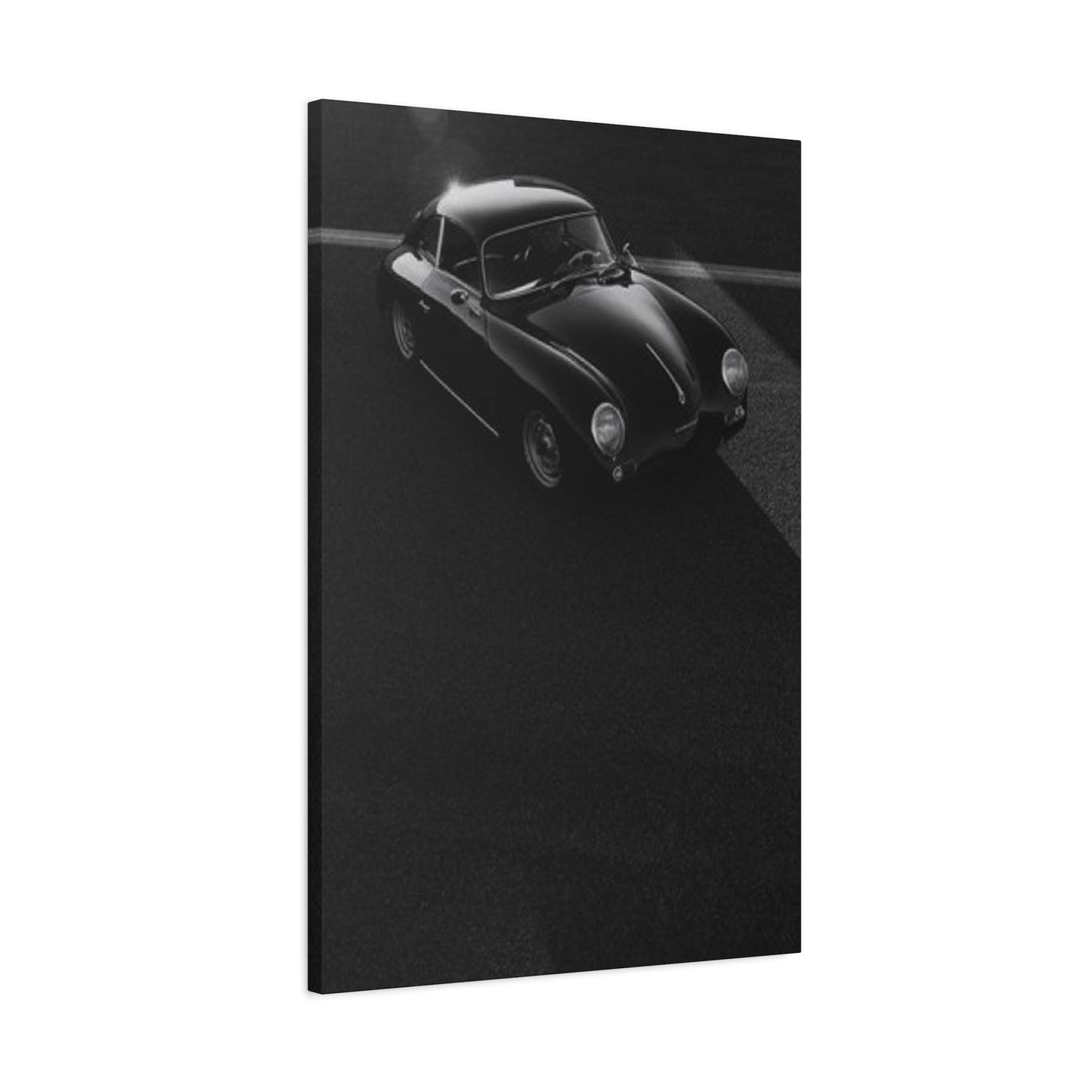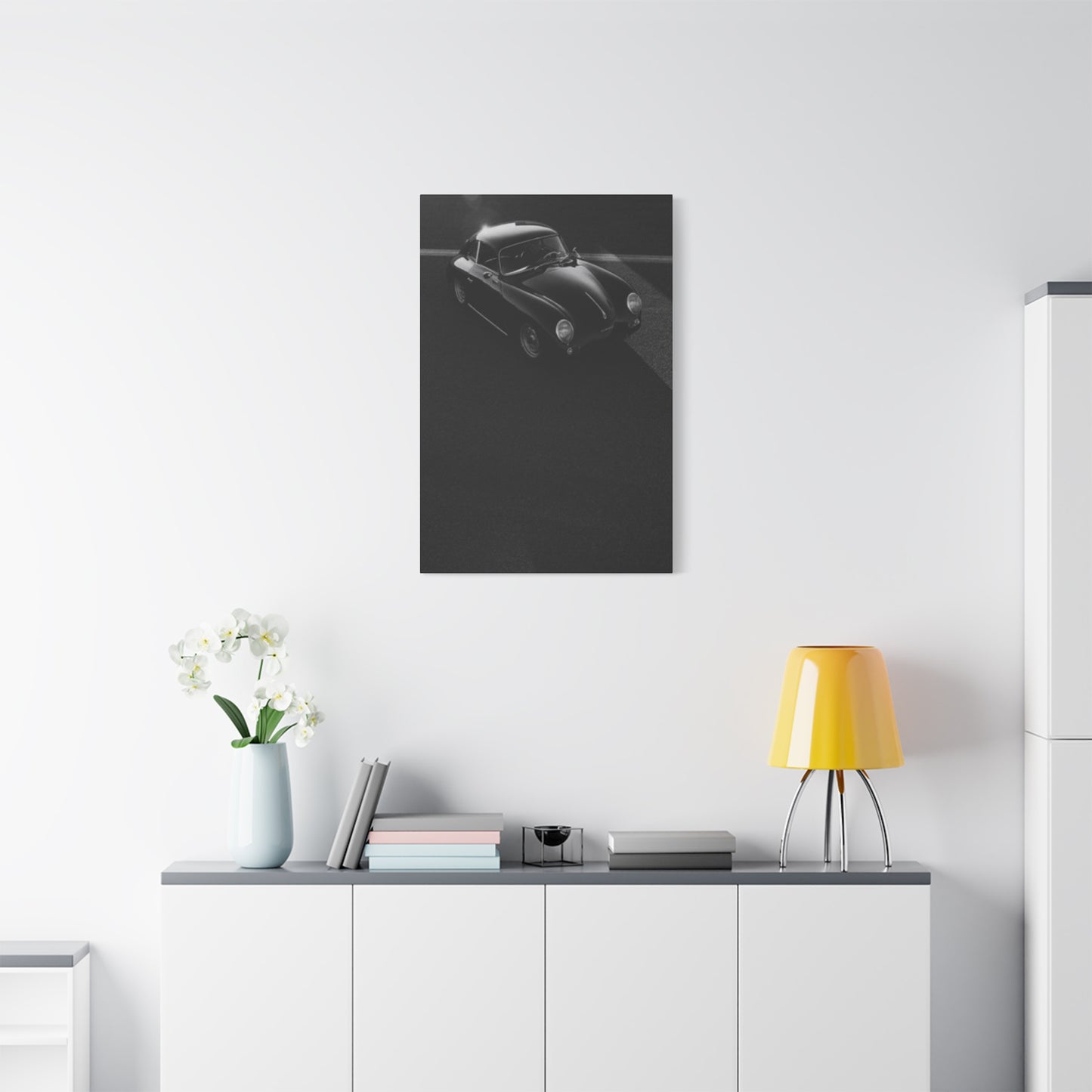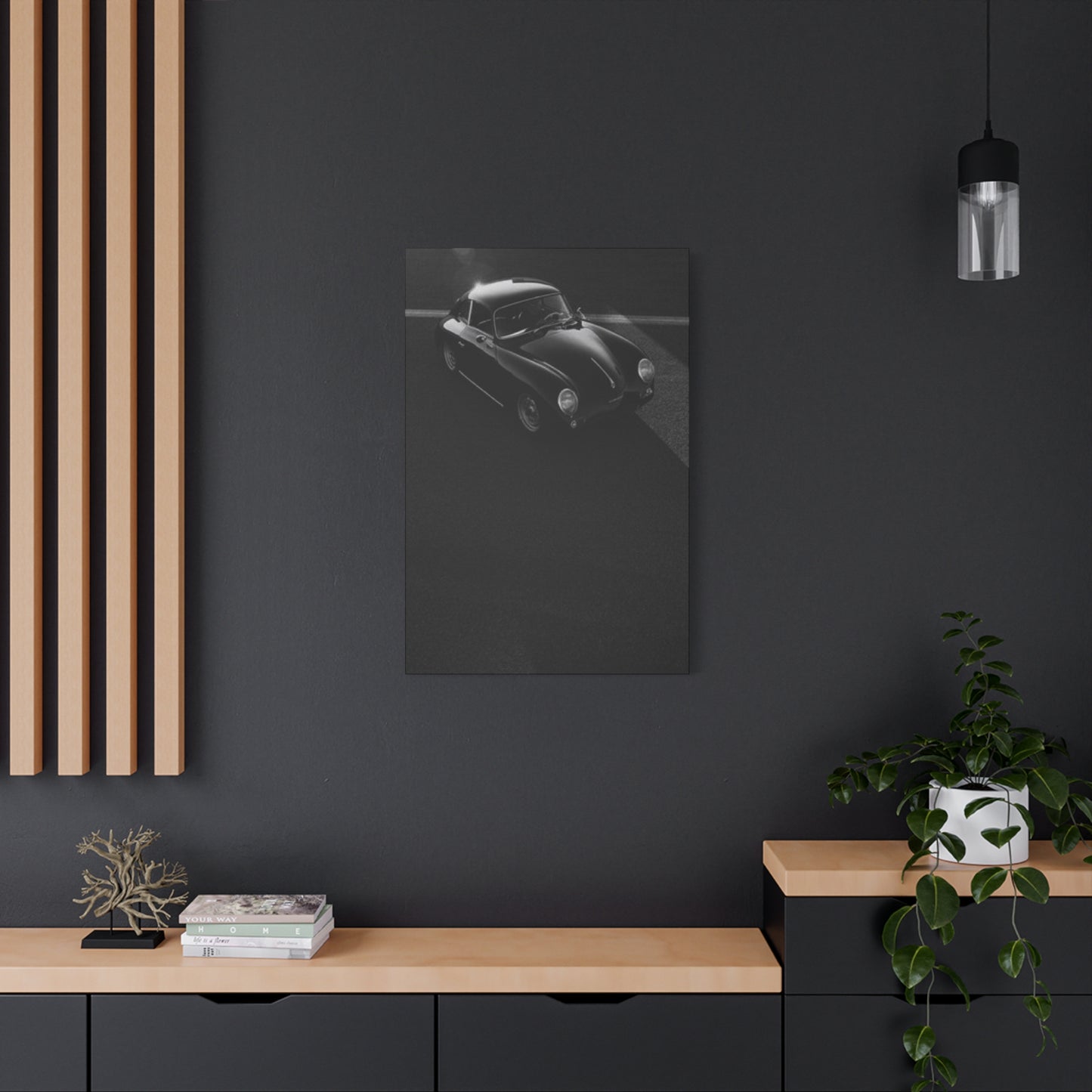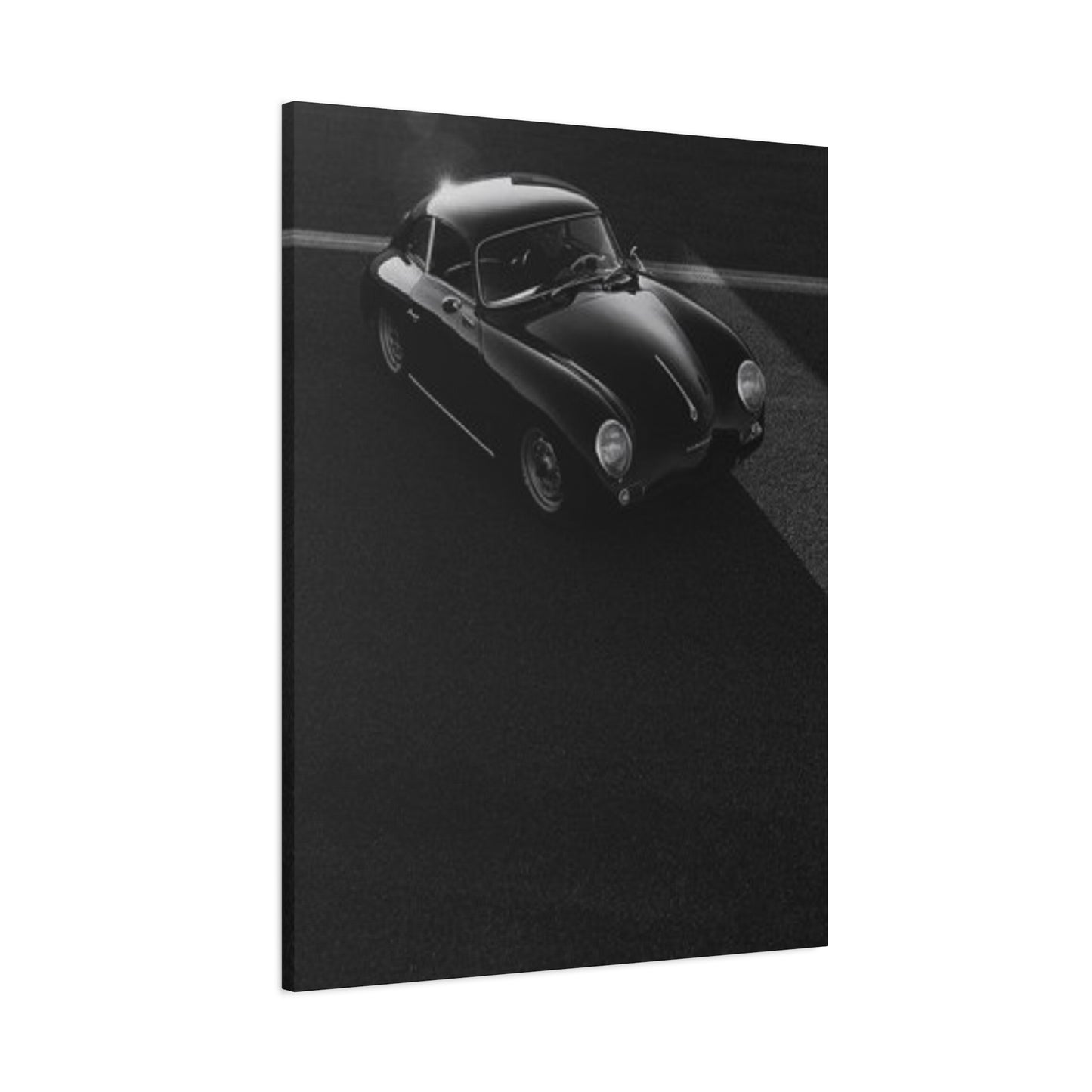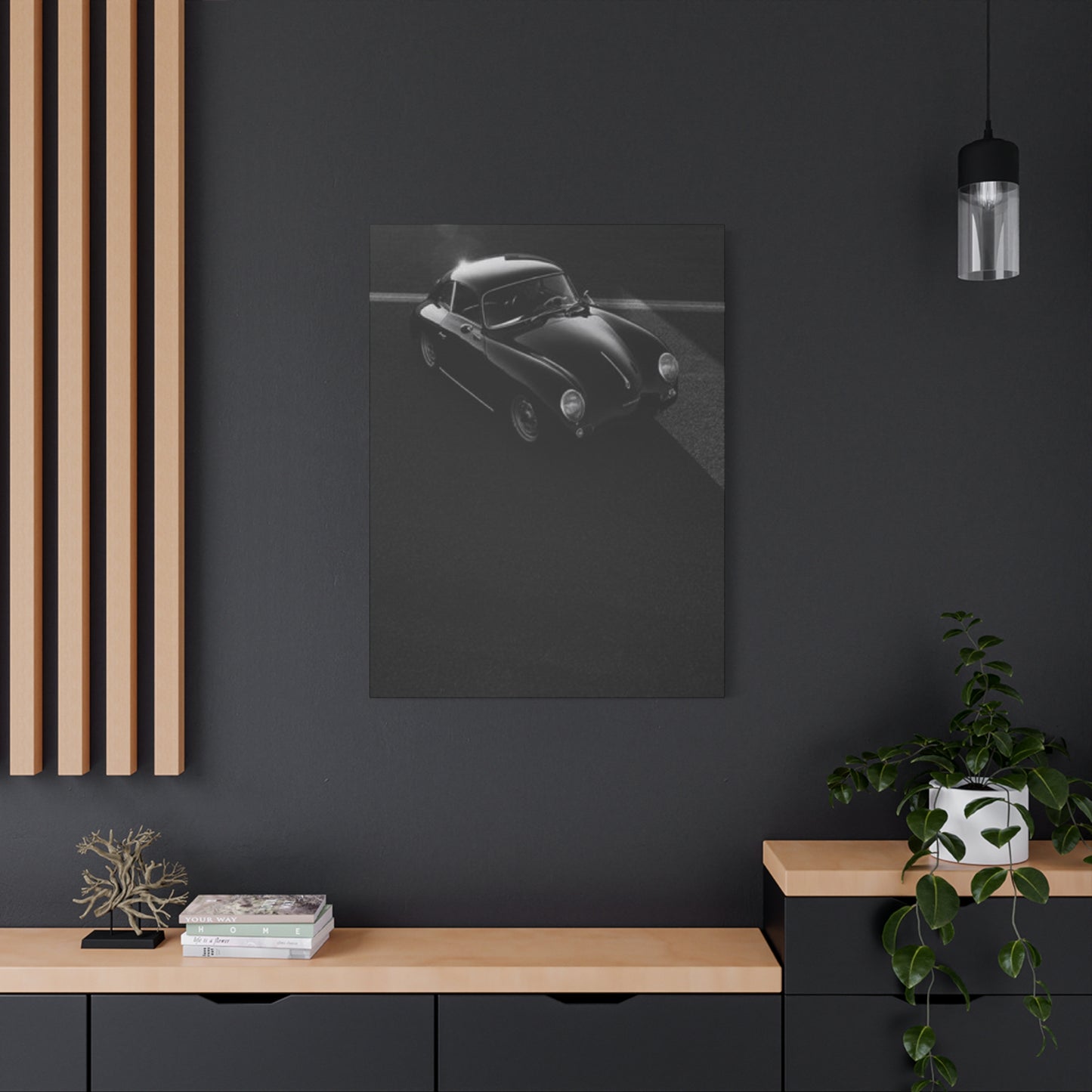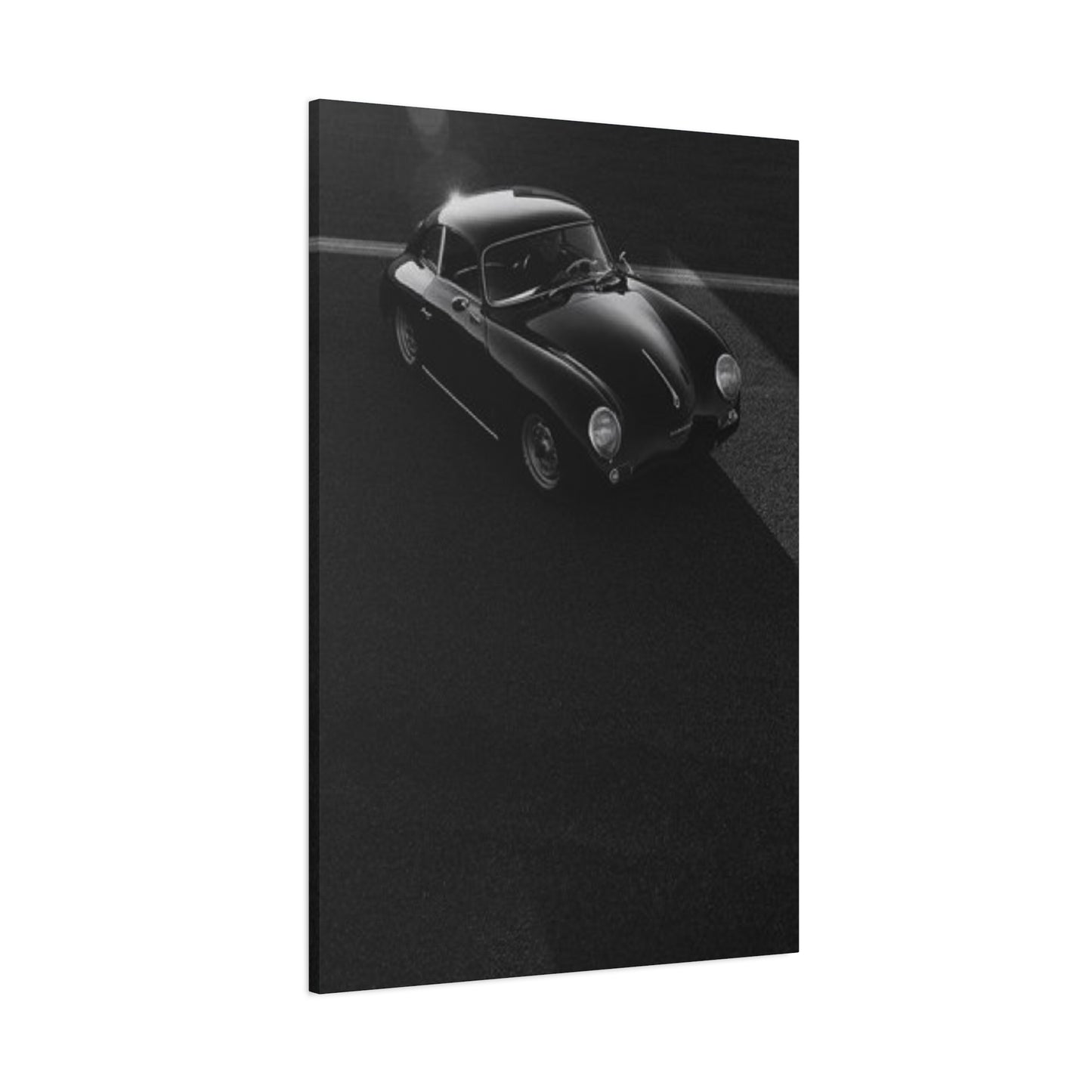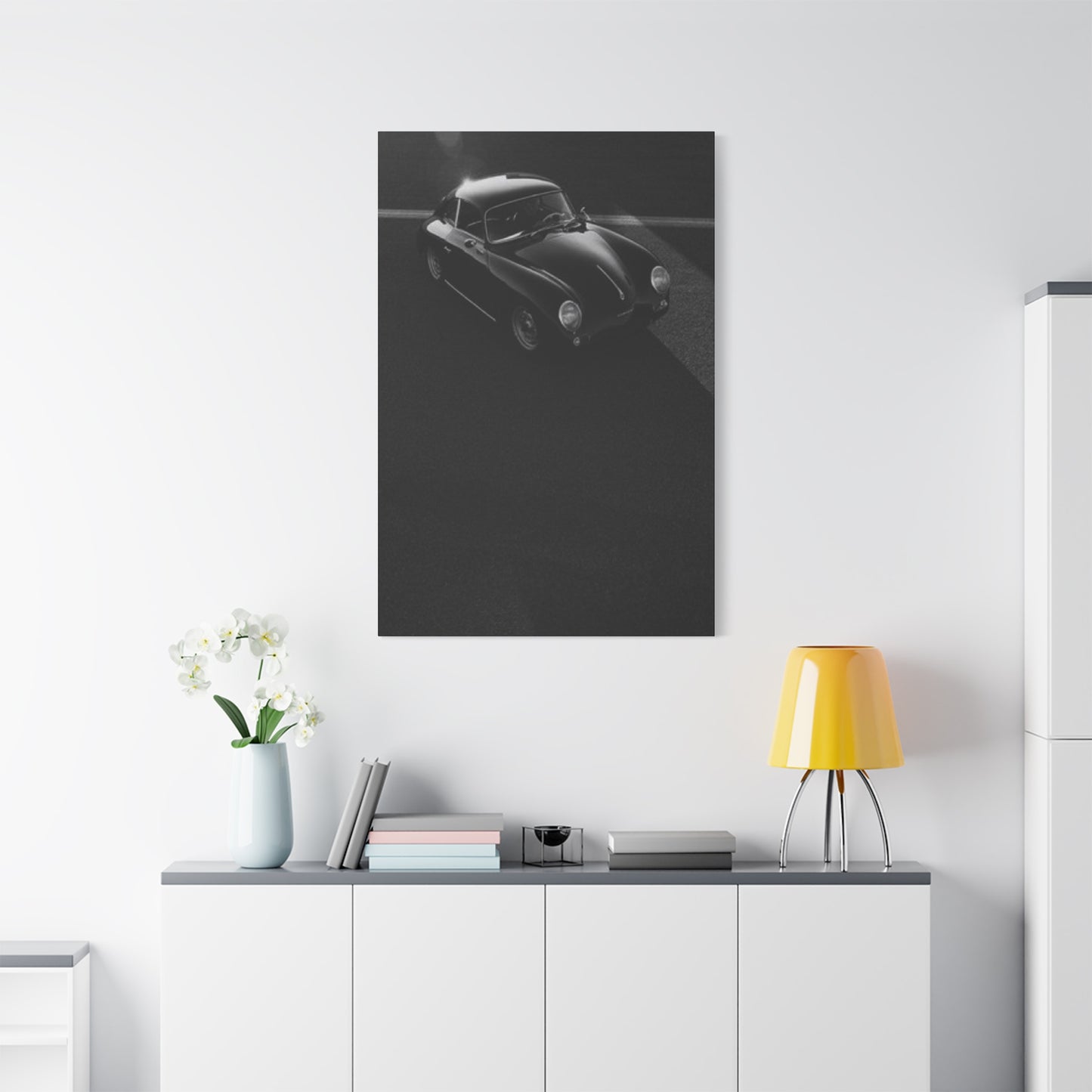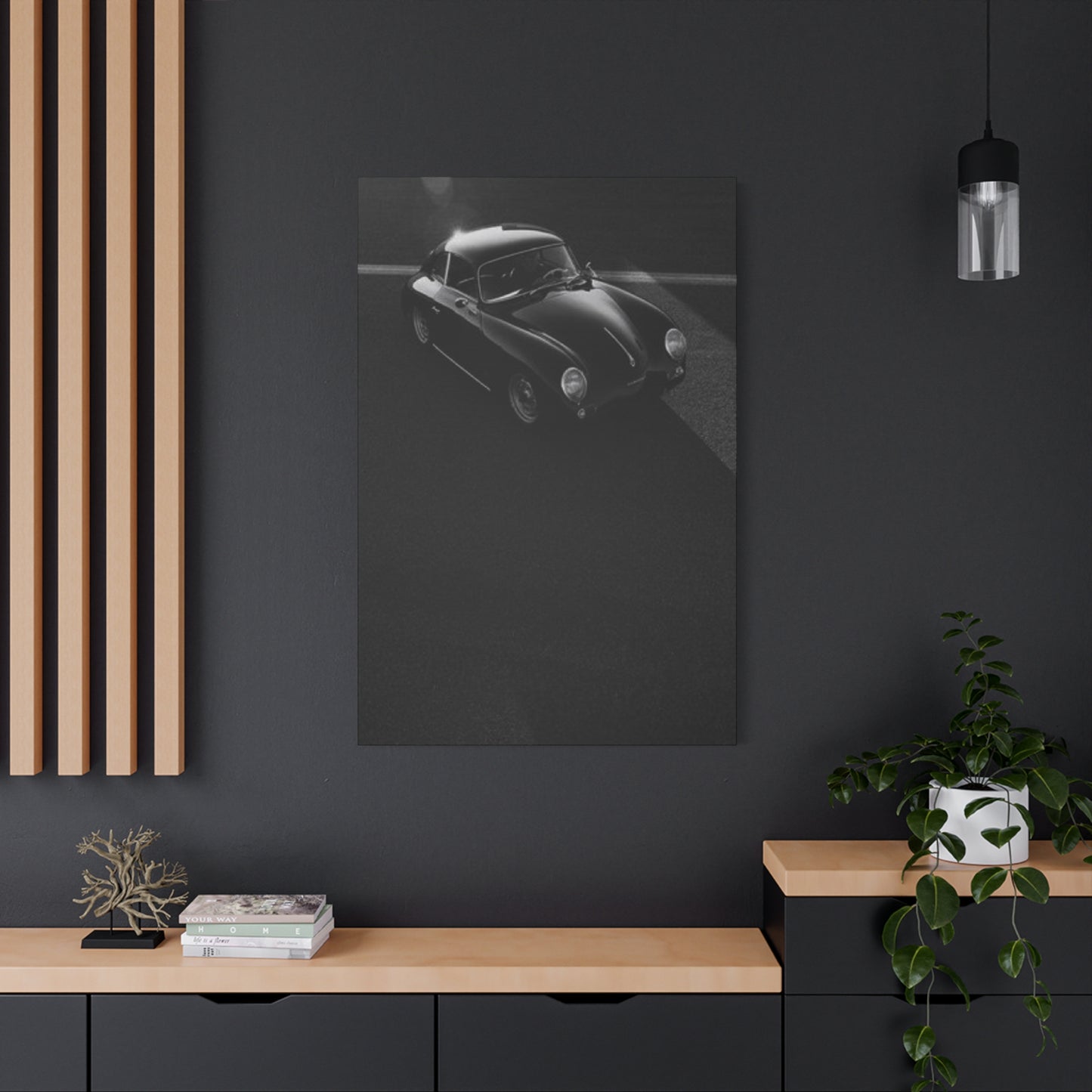Classic Cars Canvas Wall Art: Designing Your Automotive Sanctuary
Designing a man cave centered around classic black automobiles requires careful attention to both aesthetic appeal and functional practicality. The foundation of any successful automotive-themed man cave begins with establishing a cohesive color scheme that celebrates the timeless elegance of black vintage vehicles. Dark hues create an atmosphere of sophistication while providing the perfect backdrop for showcasing automotive memorabilia and collectibles.
The walls serve as the canvas for your automotive masterpiece, demanding consideration of both texture and color. Charcoal gray or deep black paint creates depth and drama, while metallic accents in chrome or silver reflect the gleaming surfaces of classic automobiles. Industrial-style lighting fixtures, reminiscent of garage work lamps, provide both ambient and task lighting essential for displaying automotive treasures and creating comfortable gathering spaces.
Flooring choices significantly impact the overall aesthetic and functionality of your black vintage car man cave. Polished concrete floors with epoxy coatings mirror the smooth surfaces found in professional automotive garages, while providing easy maintenance and durability. Alternatively, black and white checkered patterns evoke classic racing imagery, creating visual interest without overwhelming the space's sophisticated color palette.
Storage solutions must balance accessibility with visual appeal. Custom-built cabinets in matte black finishes house automotive tools, parts, and memorabilia while maintaining the space's clean lines. Open shelving displays vintage oil cans, model cars, and racing trophies, creating focal points that celebrate automotive history. Wall-mounted tool organizers not only provide functional storage but also serve as decorative elements that reinforce the garage aesthetic.
Seating arrangements should prioritize comfort while maintaining the automotive theme. Leather recliners in black or deep brown provide luxurious comfort for watching racing documentaries or socializing with fellow enthusiasts. Bar stools with chrome bases and black leather seats create casual seating areas around automotive-themed bars or workbenches. Consider repurposing vintage car seats into unique seating options that directly connect visitors to automotive history.
The integration of technology enhances both entertainment value and practical functionality. Large-screen televisions mounted at optimal viewing angles allow for racing coverage, automotive documentaries, and classic car movies. Sound systems with quality speakers create immersive audio experiences, while smart lighting controls enable customization of ambiance for different activities and occasions.
Wall art plays a crucial role in establishing the space's personality and celebrating automotive culture. Vintage racing posters, framed photographs of classic black automobiles, and automotive-themed artwork create visual interest while reinforcing the chosen theme. Metal signs reproduction vintage automotive advertisements add authenticity and character to the overall design scheme.
Vintage Vibes: Black Car Edition
Creating authentic vintage atmosphere requires careful curation of elements that transport visitors to automotive history's golden era. The selection of vintage-inspired furnishings and accessories determines the success of achieving genuine period authenticity versus mere thematic decoration. Research into specific automotive eras helps establish consistent design choices that create believable historical atmosphere.
Lighting design significantly influences the perception of vintage authenticity. Edison bulb fixtures, industrial pendant lights, and vintage-style table lamps create warm, inviting ambiance reminiscent of classic automotive workshops. String lights with exposed bulbs add casual charm while providing supplementary lighting for evening gatherings. Neon signs featuring vintage automotive logos or classic car silhouettes serve as both functional lighting and decorative focal points.
Textile choices contribute substantially to the overall vintage aesthetic. Leather upholstery on furniture pieces creates luxurious comfort while maintaining period-appropriate materials. Vintage-inspired area rugs with automotive motifs or classic patterns define seating areas and add warmth to hard flooring surfaces. Heavy curtains or blinds in complementary colors provide privacy and light control while maintaining the established design theme.
Accessory selection requires attention to historical accuracy and visual cohesion. Vintage automotive tools displayed on walls or in glass cases serve as functional art pieces that celebrate craftsmanship and mechanical heritage. Classic gas station memorabilia, including vintage pumps, signs, and advertising materials, creates authentic atmosphere while honoring automotive service culture.
The integration of vintage black automobiles, whether full-sized vehicles, scale models, or automotive components, serves as the centerpiece of the design scheme. A classic black car, if space permits, becomes the ultimate focal point around which all other design elements revolve. Alternatively, prominent display of vintage automotive components, engines, or chassis parts creates similar visual impact while requiring less space.
Color coordination extends beyond basic black to include the full spectrum of vintage automotive colors. Deep burgundy, forest green, and navy blue accents complement black while maintaining period authenticity. Chrome and polished metal accents reflect light and add glamour reminiscent of classic automotive detailing.
Furniture selection emphasizes both comfort and style appropriate to the chosen vintage period. Mid-century modern pieces complement 1950s and 1960s automotive themes, while earlier periods might benefit from more traditional or art deco inspired furniture choices. Bar areas featuring vintage-style refrigerators, classic barware, and period-appropriate accessories create authentic entertainment spaces.
Temperature control and ventilation systems ensure year-round comfort while maintaining the vintage aesthetic. Ceiling fans with industrial styling provide air circulation, while hidden HVAC systems maintain comfortable temperatures without disrupting the carefully crafted visual atmosphere.
Man Cave Garage: Black Vintage Wheels
The garage-style man cave celebrates the functional aspects of automotive culture while maintaining sophisticated design sensibilities. This approach emphasizes the working garage aesthetic, incorporating authentic automotive tools, equipment, and materials into a comfortable entertainment space. The challenge lies in balancing functional garage elements with the comfort requirements of a social gathering space.
Overhead storage systems maximize vertical space while keeping automotive tools and equipment easily accessible. Ceiling-mounted storage racks accommodate seasonal items, spare parts, and larger automotive accessories without cluttering floor space. Pulley systems for lifting and storing automotive components add authentic garage functionality while serving as interesting visual elements.
Workbench areas provide functional spaces for automotive projects and repairs while serving as casual gathering spots. Heavy-duty workbenches with integrated tool storage offer practical work surfaces and additional storage capacity. Rolling tool carts provide mobile storage solutions that can be repositioned based on current activities and space requirements.
Flooring considerations must balance durability with comfort and aesthetics. Interlocking garage floor tiles provide cushioning for extended standing while offering easy cleanup and maintenance. Drain systems, while not always necessary, add authentic garage functionality and provide practical benefits for cleaning and maintenance activities.
Ventilation systems ensure proper air circulation, especially important when incorporating automotive activities into the space design. Exhaust fans, air circulation systems, and proper ventilation planning maintain air quality while preventing odors and fumes from accumulating in enclosed spaces.
Electrical systems require careful planning to accommodate both entertainment and automotive needs. Multiple outlets positioned at convenient locations support various activities, while dedicated circuits for high-powered equipment ensure safe operation. Proper electrical planning prevents overloaded circuits and provides flexibility for future additions and modifications.
Safety considerations include proper storage of automotive chemicals, adequate fire prevention measures, and appropriate safety equipment. Secure storage cabinets for flammable materials, fire extinguishers positioned at accessible locations, and proper safety signage ensure safe enjoyment of the space while maintaining authentic garage atmosphere.
Heating and cooling systems maintain comfortable temperatures year-round while accommodating the space's dual purpose as both garage and entertainment area. Radiant heating systems provide efficient heating without interfering with overhead storage or ceiling-mounted equipment.
Security measures protect valuable automotive collections and equipment while maintaining easy access for regular use. Security systems, proper lighting, and secure storage solutions provide peace of mind while preserving the space's functional accessibility.
The Black Stallion: Vintage Car Sanctuary
Creating a sanctuary atmosphere elevates the man cave beyond simple entertainment space to become a reverent celebration of automotive artistry and history. This approach emphasizes the sculptural beauty of vintage automobiles while providing comfortable spaces for contemplation and appreciation of automotive craftsmanship. The sanctuary concept requires careful attention to lighting, display techniques, and spatial arrangement.
Museum-quality lighting systems highlight automotive displays while creating dramatic atmosphere. Track lighting with adjustable spotlights allows for precise illumination of specific vehicles or components, while ambient lighting maintains comfortable general illumination. Color temperature selection affects the appearance of automotive finishes, requiring careful consideration to accurately represent paint colors and chrome details.
Display platforms and pedestals elevate automotive components to art object status while providing appropriate viewing perspectives. Custom-built displays accommodate various automotive pieces, from complete engines to smaller components, while maintaining visual coherence throughout the space. Rotating displays allow for periodic changes in featured items, maintaining visitor interest and showcasing different aspects of automotive collections.
Climate control systems protect valuable automotive artifacts while maintaining comfortable viewing conditions. Humidity control prevents corrosion and deterioration of metal components, while temperature regulation ensures visitor comfort during extended viewing sessions. Air filtration systems maintain clean air quality, protecting both visitors and automotive displays from dust and pollutants.
Seating arrangements encourage contemplation and appreciation while maintaining clear sight lines to automotive displays. Comfortable chairs positioned at optimal viewing distances allow for extended appreciation sessions, while maintaining flexibility for social gatherings and educational activities. Bench seating provides casual resting spots without interfering with primary display areas.
Educational elements enhance the sanctuary experience by providing historical context and technical information about displayed vehicles and components. Informational plaques, interactive displays, and reference materials allow visitors to deepen their understanding of automotive history and technology. Digital displays can provide detailed information without cluttering the visual space with excessive text.
Sound systems provide subtle background audio that enhances the sanctuary atmosphere without overwhelming the space. Classic engine sounds, period music, or nature sounds create appropriate ambiance while maintaining the reverent atmosphere essential to the sanctuary concept. Sound isolation prevents external noise from disrupting the contemplative environment.
Security systems protect valuable displays while maintaining easy access for regular enjoyment. Motion sensors, security cameras, and access control systems provide comprehensive protection while preserving the open, welcoming atmosphere essential to the sanctuary experience.
Retro Roads: Black Vintage Car Man Cave
The retro roads theme celebrates the journey aspect of automotive culture, emphasizing the adventure and freedom associated with classic automobile travel. This design approach incorporates route maps, vintage travel memorabilia, and roadside Americana to create atmosphere that honors both the vehicles and the experiences they enabled. The theme allows for creative integration of geographical elements with automotive displays.
Map integration serves both decorative and functional purposes while reinforcing the travel theme. Large-scale vintage road maps displayed on walls create visual interest while celebrating the golden age of automobile travel. Interactive maps allow visitors to trace famous routes or plan their own automotive adventures, bridging historical appreciation with contemporary travel planning.
Roadside memorabilia adds authenticity and cultural context to the automotive displays. Vintage motel signs, classic restaurant memorabilia, and tourist attraction souvenirs create rich tapestries of American travel culture. These elements provide conversation starters while illustrating the broader cultural impact of automobile transportation.
Route-themed lighting creates atmosphere reminiscent of classic roadside establishments. Neon signs, vintage-style street lamps, and illuminated route markers provide both functional lighting and thematic reinforcement. String lights can trace famous routes on wall maps, creating dynamic visual elements that celebrate specific automotive journeys.
Furniture selection emphasizes comfort appropriate for travel-themed entertaining. Vintage-style diner booths provide comfortable seating while reinforcing the roadside theme. Picnic tables and casual seating arrangements encourage informal gatherings and storytelling about automotive adventures. Bar areas styled after roadside diners or drive-in restaurants create authentic entertainment spaces.
Flooring treatments can reinforce the roads theme through creative applications of materials and patterns. Asphalt-colored epoxy coatings with painted road markings create literal road surfaces within the space. Alternatively, vintage-style linoleum patterns reminiscent of classic diners and roadside establishments provide period-appropriate flooring solutions.
Display cases and shelving systems accommodate travel-related memorabilia while maintaining organized presentations. Vintage suitcases repurposed as display cases create thematic storage solutions, while traditional shelving systems display maps, guidebooks, and travel accessories. Wall-mounted displays can showcase license plates from various states and countries, celebrating the geographic scope of automotive travel.
Sound systems can incorporate authentic road sounds, vintage radio broadcasts, or period music to create immersive travel atmosphere. Classic car radio reproductions provide both functional music systems and authentic period details that enhance the overall thematic coherence.
Dark Chrome Dreams: Man Cave Decor
The dark chrome aesthetic emphasizes the sophisticated interplay between matte black surfaces and brilliant metallic accents that define classic automotive design. This approach requires careful balance between these contrasting elements to create visual drama without overwhelming the space. The successful integration of chrome details throughout the design scheme creates cohesion while celebrating the metallurgy that defines automotive artistry.
Chrome accents serve multiple functions within the design scheme, providing both decorative elements and functional hardware. Cabinet handles, light fixtures, and furniture details in polished chrome create consistent metallic themes while serving practical purposes. The strategic placement of chrome elements creates visual pathways that guide attention throughout the space while maintaining overall design coherence.
Lighting design takes advantage of chrome's reflective properties to multiply illumination effects and create dynamic visual interest. Chrome fixtures reflect and redirect light, creating complex lighting patterns that change throughout the day as natural light conditions vary. This interplay between artificial and reflected light creates constantly evolving visual experiences that maintain interest over time.
Metallic finishes extend beyond chrome to include brushed aluminum, polished steel, and other automotive metals. These varied metallic textures create visual depth while maintaining the sophisticated industrial aesthetic. The careful coordination of different metallic finishes prevents visual chaos while acknowledging the variety of metals found in vintage automobile construction.
Furniture selection emphasizes pieces that incorporate both black and metallic elements in their construction. Leather seating with chrome frames, glass-top tables with metallic bases, and bar stools with polished metal construction create cohesive furnishing schemes that support the overall design theme. Custom furniture pieces can incorporate actual automotive components, creating unique pieces that directly reference automotive design heritage.
Accessory selection focuses on items that exemplify the dark chrome aesthetic while providing functional value. Vintage automotive instruments, polished tools, and chrome-plated mechanical components serve as decorative objects while celebrating the technical aspects of automotive culture. The display of these items requires careful consideration of lighting and positioning to maximize their visual impact.
Wall treatments can incorporate metallic elements through paint techniques, wallcoverings, or applied materials. Metallic paint accents create subtle highlights, while larger metallic surfaces can serve as backdrops for automotive displays. The careful application of metallic treatments prevents overwhelming the space while providing sufficient contrast to create visual interest.
Storage solutions should maintain the dark chrome aesthetic while providing practical functionality. Black cabinets with chrome hardware, metallic storage containers, and chrome shelving systems create organized storage that supports rather than detracts from the overall design scheme. The integration of storage elements into the decorative scheme ensures that practical needs don't compromise aesthetic goals.
Timeless Black: Vintage Car Lounge
The vintage car lounge concept creates sophisticated entertainment spaces that honor automotive heritage while prioritizing comfort and social interaction. This approach emphasizes the social aspects of automotive culture, creating spaces where enthusiasts can gather to share stories, view collections, and enjoy comfortable relaxation. The lounge atmosphere requires careful attention to seating arrangements, lighting design, and acoustic treatments.
Seating arrangements must accommodate various social configurations while maintaining comfortable conversation distances. Modular seating systems allow for flexible arrangements based on group sizes and activities, while permanent seating creates defined gathering areas. The selection of upholstery materials and colors must complement the automotive theme while providing comfortable, durable seating surfaces.
Conversation areas benefit from intimate lighting and acoustic treatments that encourage discussion while maintaining privacy. Table lamps, floor lamps, and sconce lighting create pools of warm light that define seating groups and create cozy atmosphere. Acoustic treatments prevent sound from bouncing excessively, creating comfortable conditions for conversation without requiring raised voices.
Bar areas serve as natural focal points for social gatherings while providing opportunities to incorporate automotive-themed elements. Custom bar designs can incorporate automotive styling cues, vintage automotive components, or actual automotive parts repurposed as functional elements. The selection of barware, glassware, and accessories should maintain thematic coherence while providing practical service capabilities.
Entertainment systems must balance technical capabilities with aesthetic integration. Hidden speakers maintain clean visual lines while providing quality sound reproduction for music and media. Television displays should be positioned to avoid dominating the space while remaining easily viewable from seating areas. Gaming systems, if included, require careful integration to avoid cluttering the sophisticated lounge atmosphere.
Climate control systems ensure year-round comfort while maintaining the desired atmosphere. Ceiling fans with period-appropriate styling provide air circulation, while HVAC systems maintain comfortable temperatures without creating drafts or noise that interfere with social interaction. Humidity control protects both furnishings and automotive displays while maintaining visitor comfort.
Lighting control systems allow for customization of atmosphere based on activities and time of day. Dimmer switches, programmable lighting systems, and multiple lighting zones create flexibility for different uses ranging from intimate conversations to larger social gatherings. Natural light control through window treatments maintains privacy while allowing for daytime enjoyment of the space.
Storage solutions within lounge areas must balance accessibility with aesthetic appeal. Built-in storage cabinets provide space for entertainment accessories, barware, and other lounge necessities while maintaining clean visual lines. Open storage displays can showcase automotive-themed items while keeping frequently used items easily accessible.
Motorhead's Retreat: Black Vintage Edition
The motorhead's retreat celebrates the technical and mechanical aspects of automotive culture while providing comfortable spaces for both solitary contemplation and group activities. This approach acknowledges the dual nature of automotive enthusiasm, honoring both the social aspects of car culture and the individual passion for mechanical understanding and craftsmanship. The retreat atmosphere requires spaces that support both active participation and passive appreciation.
Workshop areas provide functional spaces for automotive projects while maintaining the retreat's comfortable atmosphere. Well-equipped workbenches, proper tool storage, and adequate lighting support hands-on automotive activities while remaining visually integrated with the overall design scheme. The workshop areas should feel like natural extensions of the retreat rather than separate functional spaces.
Technical library areas house automotive references, historical materials, and technical documentation while providing comfortable reading spaces. Custom shelving systems display automotive books, magazines, and manuals while maintaining organized access. Reading chairs with proper lighting create comfortable study areas for research and casual browsing of automotive literature.
Display areas for mechanical components and automotive artifacts require careful curation to maintain both educational value and visual appeal. Component displays should illustrate automotive evolution and technical innovation while remaining accessible for examination and discussion. Interactive displays allow visitors to understand mechanical principles through hands-on exploration.
Meditation spaces acknowledge the contemplative aspects of automotive appreciation, providing quiet areas for reflection and planning. These spaces might feature comfortable seating with views of featured automotive displays, creating environments that encourage deep appreciation of automotive artistry and history. The acoustic design should minimize distractions while maintaining connection to the larger retreat environment.
Social gathering areas accommodate group activities including technical discussions, planning sessions, and casual socializing. Flexible seating arrangements support various group sizes and activities, while presentation capabilities allow for sharing of automotive projects and experiences. These areas should feel connected to workshop and display areas while maintaining comfortable social atmosphere.
Technology integration supports both technical and social activities without overwhelming the retreat atmosphere. Computational tools for automotive design and analysis, communication systems for connecting with other enthusiasts, and entertainment systems for automotive media consumption require careful integration to maintain the space's contemplative qualities.
Personal customization options allow the retreat to evolve with changing interests and projects. Flexible display systems accommodate rotating exhibitions of personal projects and acquisitions, while modular furniture arrangements adapt to changing activities and group sizes. The retreat should feel personally meaningful while remaining welcoming to visitors and fellow enthusiasts.
Black Beauty Garage: Man Cave Design
The black beauty garage design celebrates the aesthetic perfection possible in automotive design while creating practical spaces for automotive activities and social gatherings. This approach emphasizes the visual drama of black automotive finishes while incorporating functional elements necessary for automotive appreciation and maintenance. The design must balance showroom-quality presentation with practical usability.
Lighting systems require special consideration to properly display black automotive finishes without creating glare or visual distortion. Professional automotive photography lighting techniques inform the placement and selection of lighting fixtures to reveal the depth and complexity of black paint finishes. Multiple lighting zones allow for both dramatic display lighting and practical work lighting.
Flooring selections must complement black automotive finishes while providing practical benefits for automotive activities. High-gloss finishes can mirror and reflect automotive displays, creating visual depth and drama. However, practical considerations including slip resistance, stain resistance, and ease of cleaning must balance against pure aesthetic appeal.
Display systems for automotive components and accessories require careful design to maintain the black beauty aesthetic while providing functional access. Custom display cases with appropriate lighting protect valuable items while allowing for detailed examination. The display systems should feel integrated with the overall design rather than appearing as afterthoughts or additions.
Cleaning and maintenance stations support the high standards necessary to maintain the black beauty aesthetic. Specialized cleaning equipment, proper ventilation, and organized storage for cleaning supplies ensure that both the space and its contents can maintain showroom-quality appearance. These utilitarian functions require careful integration to avoid disrupting the sophisticated aesthetic.
Color coordination extends beyond basic black to include the full range of colors that complement black automotive finishes. Deep reds, rich blues, and metallic accents create visual interest while maintaining sophisticated color relationships. The careful selection of accent colors prevents monotony while maintaining the dramatic impact of the black beauty theme.
Material selection emphasizes quality and sophistication appropriate to the black beauty concept. Premium materials including fine woods, quality metals, and luxurious textiles create an environment worthy of showcasing automotive artistry. The material palette should feel consistent with the quality standards exemplified by classic black automobiles.
Ventilation and climate control systems maintain optimal conditions for preserving automotive finishes and maintaining visitor comfort. Filtered air systems prevent dust accumulation on display vehicles and components, while temperature and humidity control prevent environmental damage to valuable automotive artifacts.
Old School Cool: Black Vintage Car Room
The old school cool aesthetic captures the effortless sophistication and rebellious spirit that defines classic automotive culture. This design approach celebrates the attitude and lifestyle associated with vintage automobiles while creating contemporary comfort and functionality. The challenge lies in authentically representing historical automotive culture while meeting current expectations for comfort and convenience.
Period music systems provide authentic audio experiences that transport visitors to the golden age of automotive culture. Vintage record players, classic radio reproductions, and period-appropriate sound systems create immersive audio environments while serving as decorative elements that reinforce the historical theme. The selection of music should span the various eras represented in the automotive displays.
Vintage clothing and accessory displays illustrate the broader cultural context of automotive enthusiasm, showing how car culture influenced fashion and lifestyle. Display cases or wardrobes showcasing period-appropriate driving attire, leather jackets, and automotive accessories create rich cultural narratives that extend beyond pure automotive focus.
Period furniture selections emphasize comfort and style appropriate to the represented automotive era. Mid-century modern furniture complements 1950s and 1960s automotive themes, while earlier periods might benefit from art deco or traditional styling. The furniture should feel authentic to the period while providing contemporary comfort standards.
Gaming and entertainment areas can incorporate period-appropriate recreational activities including pinball machines, arcade games, and classic board games that were popular during the represented automotive era. These recreational elements provide active entertainment while reinforcing the cultural authenticity of the overall design scheme.
Beverage service areas styled after period-appropriate establishments create authentic entertaining spaces. Soda fountains, classic bars, or drive-in inspired service areas provide functional beverage service while maintaining thematic coherence. The selection of glassware, serving accessories, and beverages should maintain historical accuracy.
Photographic displays and memorabilia create rich visual narratives that celebrate both automotive history and personal connections to car culture. Family photographs featuring vintage automobiles, historical automotive events, and personal automotive experiences create meaningful connections between visitors and the displayed automotive heritage.
Social spaces designed around automotive activities encourage hands-on participation in automotive culture. Areas for automotive storytelling, project planning, and technical discussions create environments where automotive knowledge and passion can be shared among enthusiasts of all experience levels.
Speed & Style: Black Vintage Car Space
The speed and style theme celebrates the performance aspects of automotive culture while maintaining sophisticated aesthetic standards. This approach acknowledges that automotive appreciation encompasses both visual beauty and mechanical performance, creating spaces that honor both aspects of automotive excellence. The design must convey the excitement of automotive performance while maintaining comfortable social environments.
Racing memorabilia displays create focal points that celebrate competitive automotive achievements while providing educational opportunities about racing history and technology. Trophies, racing photographs, driver gear, and racing components create dynamic displays that illustrate the evolution of automotive performance.
Performance component displays showcase the mechanical artistry that enables automotive performance while serving as sculptural elements within the space. Engine displays, suspension components, and performance modifications demonstrate the technical innovation that defines high-performance automotive culture.
Motion-themed design elements create visual excitement that reflects the dynamic nature of automotive performance. Curved lines, flowing forms, and dynamic lighting create environments that feel energetic and exciting while maintaining sophisticated design standards. These design elements should suggest movement and speed without creating chaotic or overwhelming visual experiences.
Technology integration can include simulation systems that allow visitors to experience automotive performance in safe, controlled environments. Racing simulators, virtual reality systems, and interactive displays create engaging experiences while educating visitors about performance driving techniques and automotive technology.
Seating arrangements must accommodate both relaxed socializing and focused attention on performance-related activities. Seating inspired by racing seats provides thematic continuity while ensuring comfort during extended entertainment sessions. The arrangement should support both individual activities and group participation.
Sound systems capable of reproducing authentic automotive performance sounds create immersive experiences that celebrate the auditory aspects of automotive performance. Quality sound reproduction systems can recreate engine sounds, racing environments, and period music that defined various eras of automotive performance.
Performance tracking and documentation systems allow enthusiasts to record and share their own automotive performance experiences. Digital displays, documentation systems, and communication tools create connections between the man cave environment and active participation in automotive performance activities.
Safety considerations acknowledge that performance-themed spaces may encourage discussion and planning of performance driving activities. Appropriate safety information, emergency contacts, and safety equipment ensure responsible enjoyment of performance automotive culture.
The Classic Black Ride Hideout
The hideout concept creates intimate, private spaces where automotive enthusiasts can retreat from daily pressures while surrounding themselves with automotive inspiration and comfort. This approach emphasizes privacy, comfort, and personal connection with automotive culture while providing all necessary amenities for extended retreat sessions. The hideout should feel both secluded and welcoming.
Privacy features including window treatments, sound dampening, and separate entrances create genuine retreat environments where visitors can disconnect from external pressures and focus on automotive interests. The privacy features should enhance rather than isolate, creating comfortable boundaries without preventing social interaction when desired.
Personal comfort amenities ensure that the hideout can support extended stays while maintaining the automotive theme. Comfortable sleeping arrangements, kitchen facilities, and bathroom access allow for overnight retreats or extended project sessions. These amenities require careful integration to avoid disrupting the automotive atmosphere.
Communication systems provide connections to the broader automotive community while allowing for privacy control. Internet access, video conferencing capabilities, and communication tools enable participation in virtual automotive events and communities without requiring physical departure from the hideout environment.
Security systems protect both the retreat space and its contents while maintaining the comfortable, welcoming atmosphere. Access control, surveillance systems, and alarm capabilities provide comprehensive protection while preserving the hideout's intimate character.
Emergency preparedness acknowledges that retreat spaces require safety planning and emergency access. Emergency exits, communication systems, fire safety equipment, and first aid supplies ensure safe enjoyment of the hideout while maintaining the comfortable retreat atmosphere.
Personal project spaces within the hideout accommodate individual automotive interests including model building, research projects, and planning activities. Well-lit work surfaces, organized storage, and proper ventilation support various project types while maintaining integration with the overall hideout design.
Environmental controls ensure year-round comfort while accommodating the hideout's intensive use requirements. Climate control, air quality management, and lighting controls create customizable environments that adapt to various activities and personal preferences.
Black and Bold: Vintage Car Man Cave
The black and bold aesthetic embraces dramatic design choices that create powerful visual impact while celebrating automotive culture's rebellious and innovative spirit. This approach requires confidence in design decisions and careful execution to achieve dramatic effects without overwhelming visitors or sacrificing functionality. The bold aesthetic should feel intentional and sophisticated rather than chaotic or excessive.
Architectural features create dramatic spatial experiences that reflect the bold aesthetic while providing functional benefits. Exposed structural elements, dramatic ceiling treatments, and bold spatial divisions create environments that feel powerful and exciting while maintaining comfortable human scale.
Lighting design takes advantage of dramatic contrasts between light and dark to create powerful visual effects while providing functional illumination. Dramatic spotlighting, bold accent lighting, and creative shadow play create constantly changing visual experiences that maintain interest and excitement.
Bold color applications extend beyond basic black to include strategic applications of vibrant colors that create visual excitement without disrupting the overall design coherence. Racing colors, neon accents, and metallic highlights create energy and visual interest while maintaining sophisticated design relationships.
Oversized design elements create bold visual statements that reinforce the automotive theme while providing functional benefits. Oversized artwork, dramatic furniture pieces, and bold architectural features create memorable environments that reflect the bold aesthetic while serving practical purposes.
Contrast applications utilize the interplay between opposing elements to create visual drama and interest. Smooth versus textured surfaces, matte versus glossy finishes, and dark versus light elements create rich visual experiences that reflect the complexity and sophistication of automotive design.
Statement pieces serve as focal points that anchor the bold aesthetic while providing conversation starters and visual anchors. Large-scale automotive artwork, dramatic furniture pieces, or significant automotive displays create memorable focal points around which the entire design scheme revolves.
Integration challenges require careful planning to ensure that bold design choices support rather than compete with each other. The coordination of bold elements prevents visual chaos while maintaining the dramatic impact essential to the black and bold aesthetic.
Racing Nostalgia: Black Vintage Garage
The racing nostalgia theme celebrates the competitive history of automotive culture while creating environments that honor both individual achievement and the collective history of automotive racing. This approach requires authentic historical references combined with contemporary comfort and functionality. The nostalgia theme should feel genuine rather than superficial or commercialized.
Historical timeline displays trace the evolution of automotive racing while providing educational opportunities and conversation starters. Chronological displays of racing history, technological development, and cultural impact create rich narratives that contextualize individual racing memorabilia within broader historical frameworks.
Authentic racing memorabilia requires careful curation to ensure historical accuracy and meaningful representation. Racing helmets, driver suits, race programs, and authentic racing components create powerful connections to racing history while serving as focal points for the overall design scheme.
Track-inspired design elements bring the racing environment into the man cave while maintaining comfort and functionality. Track surface materials, racing barrier elements, and track signage create authentic atmosphere while providing functional benefits including durability and easy maintenance.
Driver tribute areas honor specific drivers, teams, or racing eras while providing opportunities for personal connection and storytelling. Dedicated display areas for specific racing heroes create intimate spaces for contemplation and appreciation while contributing to the overall historical narrative.
Racing simulation systems allow visitors to experience racing environments while learning about racing techniques and vehicle dynamics. Quality simulation systems provide both entertainment and educational value while creating interactive experiences that engage visitors beyond passive observation.
Period-appropriate entertaining areas recreate the social environments associated with racing culture including victory celebrations, team gatherings, and spectator experiences. These social spaces should reflect the camaraderie and excitement that define racing culture while providing comfortable entertainment capabilities.
Technical education opportunities help visitors understand the engineering and technological innovations that drive racing performance. Interactive displays, component demonstrations, and technical references create learning opportunities that deepen appreciation for racing achievements.
Man Cave Motors: The Black Vintage Edition Wall Art
Wall art serves as the primary vehicle for establishing aesthetic themes, creating focal points, and personalizing automotive man caves while providing opportunities for education and inspiration. The selection, arrangement, and integration of wall art significantly impacts the overall atmosphere and success of automotive-themed spaces. Quality wall art creates lasting visual impact while supporting the functional requirements of entertaining and relaxation.
Automotive photography provides powerful visual connections to automotive history and culture while offering flexibility in scale, subject matter, and artistic interpretation. Black and white photography of vintage automobiles creates timeless appeal while complementing dark color schemes. Color photography can highlight specific automotive details including paint finishes, interior elements, and mechanical components.
Original automotive artwork including paintings, drawings, and mixed media pieces creates unique focal points while supporting living artists who celebrate automotive culture. Commission pieces allow for personalized artistic representations of specific vehicles or racing moments while creating one-of-a-kind decorative elements that reflect personal automotive interests.
Vintage advertising materials including original posters, signs, and promotional materials provide authentic historical artifacts while creating colorful, energetic visual elements. Reproduction advertising materials offer similar visual impact at lower cost while maintaining historical authenticity and thematic coherence.
Racing memorabilia including race programs, victory lane photographs, and driver autographs create personal connections to racing history while providing conversation starters and educational opportunities. The framing and display of racing memorabilia requires archival techniques to preserve historical documents while making them accessible for viewing and appreciation.
Technical drawings and blueprints illustrate the engineering artistry behind automotive design while creating sophisticated decorative elements that appeal to technically minded enthusiasts. Original blueprints, when available, provide authentic historical artifacts, while reproduction technical drawings offer similar aesthetic impact at accessible pricing.
Metal art including sculptural elements, automotive component art, and industrial decorative pieces creates three-dimensional visual interest while reinforcing industrial automotive themes. Metal art can incorporate actual automotive components, creating direct connections between decorative elements and automotive culture.
Interactive wall art including magnetic displays, modular systems, and changeable elements allows for periodic updates and personalization while maintaining long-term visual interest. These systems accommodate growing collections, seasonal changes, and evolving automotive interests while providing flexibility for future modifications.
Lighting integration transforms wall art from static displays into dynamic focal points that change throughout the day and adapt to various activities. Picture lighting, accent lighting, and integrated illumination systems enhance artwork visibility while creating dramatic visual effects that support the overall atmospheric goals.
Collection display systems accommodate multiple related pieces while maintaining organized, coherent presentations. Gallery wall arrangements, systematic spacing, and thematic groupings create professional-quality displays that showcase automotive collections while maintaining visual clarity and impact.
Custom framing and mounting systems ensure proper presentation and preservation of valuable automotive artwork and memorabilia while supporting the overall design aesthetic. Professional framing techniques protect investments while creating polished presentations that reflect the quality and importance of displayed materials.
Installation planning considers wall construction, electrical requirements, and future modification needs while ensuring secure mounting of valuable artwork and memorabilia. Proper installation techniques protect both artwork and wall surfaces while providing flexibility for future rearrangement and collection expansion.
Conclusion
Creating the perfect black vintage car man cave represents a harmonious blend of automotive passion, sophisticated design principles, and functional entertainment space planning. Throughout this comprehensive exploration of automotive-themed spaces, we've examined how various design approaches can celebrate automotive culture while providing comfortable, practical environments for socializing, relaxation, and personal automotive pursuits.
The success of any automotive man cave depends on careful attention to both aesthetic coherence and functional requirements. Whether embracing the classic elegance of the Black Stallion sanctuary, the rebellious energy of the black and bold aesthetic, or the nostalgic warmth of old school cool, each approach requires thoughtful integration of lighting, furnishing, storage, and display elements that support both the chosen theme and the practical needs of regular use.
Lighting emerges as perhaps the most critical element in creating successful automotive spaces, serving multiple functions including artwork illumination, ambient atmosphere creation, and functional task lighting. The interplay between dramatic automotive displays and comfortable social environments requires sophisticated lighting control systems that adapt to various activities while maintaining the desired aesthetic impact throughout different times of day and seasons.
The integration of authentic automotive elements, whether full vehicles, components, or memorabilia, provides the foundation for meaningful automotive spaces that transcend mere thematic decoration. These authentic elements create emotional connections that transform entertainment spaces into personal sanctuaries that reflect individual automotive passions while welcoming fellow enthusiasts for shared experiences and storytelling.
Storage solutions must balance accessibility with aesthetic appeal, ensuring that practical necessities don't compromise the carefully crafted visual atmosphere. From tool organization in garage-style spaces to memorabilia display in collector-focused environments, thoughtful storage design supports both daily functionality and long-term collection growth while maintaining organized, professional presentations.
Technology integration requires careful balance between contemporary capabilities and period authenticity, ensuring that modern conveniences enhance rather than detract from historical automotive themes. Entertainment systems, climate control, and security measures should support the space's primary functions while remaining as invisible as possible within the overall design scheme.

















